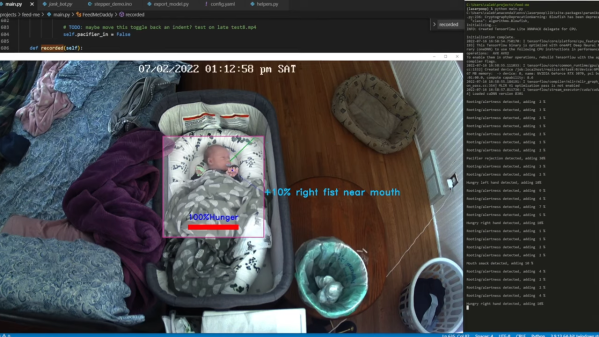Newborn babies can be tricky to figure out, especially for first-time parents. Despite the abundance of unsolicited advice proffered by anyone who ever had a baby before — and many who haven’t — most new parents quickly get in sync with the baby’s often ambiguous signals. But [Caleb] took his observations of his newborn a step further and built a machine-learning hungry baby early warning system that’s pretty slick.
Normally, babies are pretty unsubtle about being hungry, and loudly announce their needs to the world. But it turns out that crying is a lagging indicator of hunger, and that there are a host of face, head, and hand cues that precede the wailing. [Caleb] based his system on Google’s MediaPipe library, using his baby monitor’s camera to track such behaviors as lip smacking, pacifier rejection, fist mouthing, and rooting, all signs that someone’s tummy needs filling. By putting together a system to recognize these cues and assign a weight to them, [Caleb] now gets a text before the baby gets to the screaming phase, to the benefit of not only the little nipper but to his sleep-deprived servants as well. The video below has some priceless bits in it; don’t miss [Baby Caleb] at 5:11 or the hilarious automatic feeder gag at the end.
We’ve seen some interesting videos from [Caleb] recently, mostly having to do with his dog’s bathroom habits and getting help cleaning up afterward. We can only guess how those projects will be leveraged when this kid gets a little older and starts potty training.
Continue reading “Machine Learning Baby Monitor Prevents The Hunger Games”













